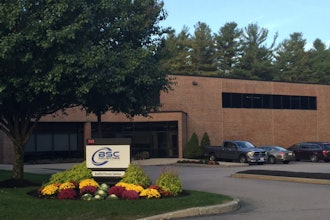This article first appeared in Industrial Distribution's March/April issue. To view it, click here.
For those of you who regularly attend the NAW Executive Summit in Washington DC, you’ll agree that the gods have been smiling down on us to provide two consecutive Januarys where we could convene sans wet wool jackets draped over the backs of our chairs.
But in terms of notables, the beautiful weather ranks low compared to the presentations that were, on the whole, equal parts compelling and inspiring. From Graybar’s VP of Business Development, John Mansfield, to Mark Dancer of Channelvation and Florida Senator Marco Rubio, the docket was packed with research, action items, and energy.
Typically understated, this year’s chairman’s address – elocuted by Mark Kramer, CEO of Laird Plastics – was perhaps the most memorable for me because it focused around an issue that distributors in our arena have been touching on more and more frequently — that of sales talent recruitment and retention. Kramer started off with a point so brilliant in its starkness: in our industry, he said, “Nothing happens until someone sells something to somebody.”
I think we can all agree on that.
Kramer went on to emphasize just how important it is to cultivate our sales talent, especially as we collectively struggle with filling such a key role within our organizations. From a recruitment standpoint, he explained, “One important thing we can do is learn to describe what we do in a different way... Help them understand we don’t just sell products they see in a brochure; we solve customer problems.”
This is great point – and we know its true – but how do we relay the bright points of our industry to a possibly disinterested public? As Kramer proceeded, he challenged listeners to stop paying lip service to this very critical topic, and to really put forth some effort in pursuing actionable steps forward to targeting this industry-wide issue. In particular, Kramer urges competitive privacy issues to take a back seat to improving the “image” of the industry as a whole — by employing state-of-the-art techniques to improve distribution's ability to compete amongst other industries to recruit young people.
Some of the best techniques are going to be generated through strong ideas and collaboration, and as associations continue to evolve (check out ICP’s latest efforts on page 11), so too must their members.
NAW was a great example of company executives putting aside their competitive concerns and sitting down for a few days of brainstorming, networking, and roundtable discussions. The basic ideas are good, and perpetuating them through industry events that provide true value means that, over time, we will see industrial distributors become more receptive to the idea that broad perception change can only come through the pooling of our mutual efforts.
So if it feels like industry associations, publications, and researchers are selling you on this idea of collaboration for the good of the industry, it's because we are. But as Mark Kramer says — nothing happens until someone sells something to somebody.
Check out this month's Distributor Profile on DGI Supply (page 18), where DGI delves into – among other things – some of its more progressive strategies for rooting out sales talent.


















